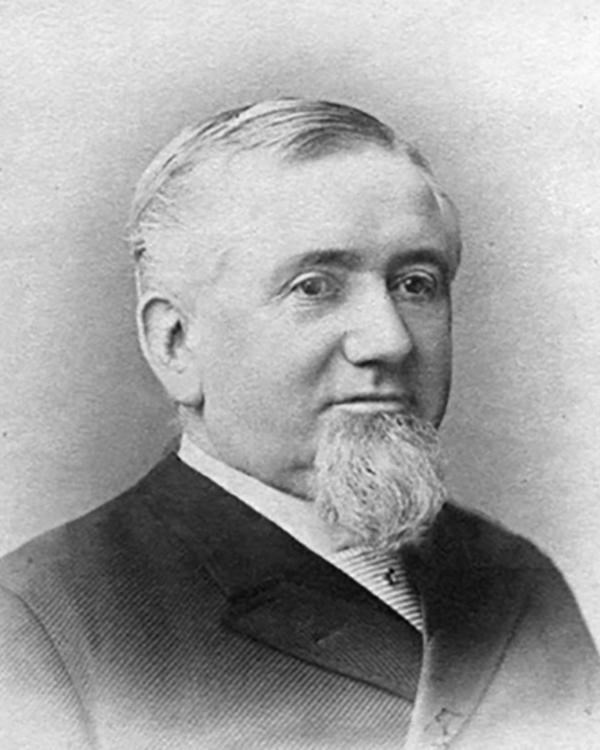Last updated: March 12, 2024
Person
George M. Pullman

George Mortimer Pullman was an American engineer and industrialist. He designed and manufactured the Pullman sleeping car and founded a company town, Pullman, for the workers who manufactured it. His Pullman Company also hired African-American men to staff the Pullman cars, who became known and widely respected as Pullman porters, providing elite service.
Pullman developed his first railroad sleeping car, the Pullman sleeper or "palace car" in 1864. They were designed after the packet boats that traveled the Erie Canal of his youth. After President Lincoln was assassinated, Pullman arranged to have his body carried from Washington, D.C. to Springfield, Illinois on a sleeper car, for which he gained national attention, as hundreds of thousands of people lined the route in homage. Orders for his new car began to pour in. The sleeping cars proved successful although each cost more than five times the price of a regular railway car. They were marketed as "luxury for the middle class."
In 1867 Pullman introduced his first "hotel on wheels," the President, a sleeper car with an attached kitchen and dining car. The food rivaled the best restaurants of the day and the service was impeccable. The company hired African-American freedmen as Pullman porters.
In 1880 Pullman bought 4,000 acres, near Lake Calumet 14 miles south of Chicago, on the Illinois Central Railroad for $800,000. He hired Solon Spencer Beman to design his new plant there. Trying to solve the issue of labor unrest and poverty, he built a company town adjacent to his factory; it featured housing, shopping areas, churches, theaters, parks, hotel and library for his factory employees. The 1,300 original structures were designed by Beman. The centerpiece of the complex was the Administration Building and a man-made lake. The Hotel Florence, named for Pullman's daughter, was built nearby.
Pullman believed that the country air and fine facilities, without agitators, saloons and city vice districts, would result in a happy, loyal workforce. The model planned community became a leading attraction for visitors who attended the World's Columbian Exposition of 1893.
In 1894, when manufacturing demand fell off, Pullman cut jobs and wages and increased working hours in his plant to lower costs and keep profits, but he did not lower rents or prices in the company town. The workers eventually launched a strike. When violence broke out, he gained the support of President Cleveland for the use of US troops. The strike and boycott shut down much of the nation's freight and passenger traffic west of Detroit.
The newly created American Railway Union was led by Eugene Victor Debs, a pacifist and socialist who later founded the Socialist Party of America. Under the leadership of Debs, sympathetic railroad workers across the nation tied up rail traffic to the Pacific. Strikers and Debs gave Pullman five days to respond to the union demands but Pullman refused to negotiate.
On June 26, all Pullman cars were cut from trains. When union members were fired, entire rail lines were shut down, and Chicago was besieged. One consequence was a blockade of the federal mail. Violence broke out between rioters and federal troops that were sent to protect the mail. By the end of the July, 34 people had been killed, the strikers were dispersed, the troops were gone, and the courts had sided with the railway owners, and Debs was in jail for contempt of court.
Pullman's reputation was soiled by the strike. In 1894, in an effort to conciliate organized labor after the strike, President Grover Cleveland and Congress designated Labor Day as a federal holiday. Legislation for the holiday was pushed through Congress six days after the strike ended.
In 1897, George Pullman died of a heart attack at the age of 66, only three years after the strike. In his will, Pullman bequeathed $1.2 million to establish the Pullman Free School of Manual Training for the children of employees of the Pullman Palace Car Company and the residents of the neighboring Roseland community. In 1950, the George M. Pullman Educational Foundation succeeded the Pullman Free School of Manual Training, also known as Pullman Tech, after it closed its doors in 1949. The city of Pullman, Washington is named in his honor.
